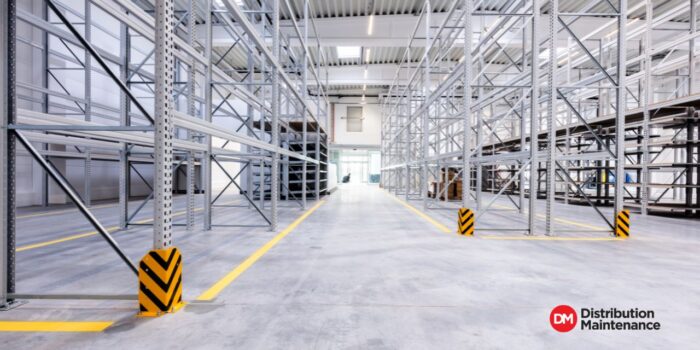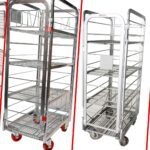Increase Capacity and Productivity with Your Warehouse Racking System
Is your warehouse truly working as hard as it could be? The fact is, a warehouse is more than just a place to store things; it’s a vital part of your business’s success. Companies are always looking for ways to run better, spend less, and get orders out faster. This is precisely where a well-designed and maintained warehouse racking system comes into play. It goes beyond simple storage, creating an organised, efficient, and safe environment that directly boosts your capacity and productivity.
The Foundation of Capacity: Understanding Your Racking System
A warehouse racking system is the backbone of any effective storage strategy. It allows businesses to utilise vertical space, which is often underused, dramatically increasing storage capacity compared to stacking goods directly on the floor. However, merely installing racking isn’t enough. The right type of racking, correctly installed and maintained, determines how much product you can store and how quickly you can access it.
Types of Warehouse Racking Systems for Enhanced Capacity
Different types of racking systems are designed to optimise space and access in various ways, directly influencing your warehouse’s capacity:
- Wide Aisle Racking: This is a common and versatile system providing direct access to every pallet. While it requires wider aisles, its accessibility makes it excellent for operations needing high selectivity and fast picking. It maximises vertical space for varied inventory.
- Double Deep Racking: As the name suggests, this system stores pallets two deep from the aisle, effectively halving the number of aisles compared to wide-aisle racking. This significantly increases storage density, boosting your warehouse’s capacity for goods that can be stored in deeper lanes.
- Drive-In Racking: This high-density system allows forklifts to drive directly into the racking structure, storing pallets several deep and high. It’s ideal for storing large volumes of identical products, such as in cold storage or bulk storage, where space maximisation is key. It provides significant capacity increases for specific inventory types.
- Small Parts and Picking Systems: While not for pallets, these systems, including shelving and multi-tier structures, are vital for consolidating smaller items. They create dense storage areas for high-volume picking operations, freeing up pallet space elsewhere and enhancing the overall capacity for diverse stock.
- Garment Hanging Systems: Specialised for the apparel industry, these systems hang garments, saving space and preventing creasing. They represent a unique capacity solution for textile logistics.
- Cantilever Racking: Designed for long, bulky items like timber, pipes, or steel bars, cantilever racking offers unobstructed front access. It efficiently stores items that would otherwise take up vast amounts of floor space, thereby increasing the effective capacity for these specific products.
Boosting Productivity Through Racking System Design
Capacity is important, but productivity is about how efficiently you move goods. Your warehouse racking system design directly influences this:
- Improved Accessibility: The chosen racking type dictates how easily workers and equipment can access goods. Systems like wide aisle racking offer full selectivity, speeding up picking times for varied inventory.
- Streamlined Workflow: A well-planned racking layout minimises travel distances for forklifts and personnel. This means less time spent moving between locations and more time dedicated to productive tasks.
- Better Organisation: Racking systems inherently bring organisation to a warehouse. Clearly defined storage locations for different products reduce search times and errors, directly impacting productivity.
- Faster Loading and Unloading: With structured racking, loading and unloading trucks and containers becomes a more efficient process. Forklifts have clear paths and designated spots, reducing bottlenecks.
Health and Safety: A Non-Negotiable Aspect of Racking
Maximising capacity and productivity must never compromise safety. Health and safety laws in the UK require warehouses to carry out regular pallet racking safety inspections. This is not just a legal obligation; it is fundamental to protecting your staff and assets. Damaged racking can lead to catastrophic collapses, serious injuries, and significant financial losses due to damaged goods and operational downtime.
Our work and equipment supplied are designed to comply with critical directives:
- SEMA Code of Practice (8.4 Rack Protection): The Storage Equipment Manufacturers’ Association (SEMA) provides detailed guidance on the safe use of static pallet racking, including recommendations for rack protection to minimise future damage.
Adhering to these standards ensures your warehouse racking system is not only efficient but, crucially, safe for everyone working within it.
Repairs and Installation: The Role of Expert Intervention
Damage to your racking can occur at any time, whether from forklift impacts, overloading, or general wear. When this happens, swift action is essential to minimise risks to staff and goods and to get your warehouse fully operational again.
Distribution Maintenance plays a critical role here. Our engineers are highly skilled and ensure that your storage systems are repaired and installed to the highest SEIRS (Storage Equipment Installers Registration Scheme) standards. This guarantees repairs are carried out safely and efficiently. We understand that time is money; therefore, we can often respond on the same day for time-critical repairs.
We have the expertise to repair various types of pallet racking storage systems.
This comprehensive capability means we can address a broad spectrum of your warehouse infrastructure needs.
From a financial and environmental perspective, repairing your racking where possible makes sound sense. It is often more cost-effective than purchasing brand new racking. By opting for repairs, businesses can achieve significant savings while also contributing to sustainability by extending the life of existing assets. We encourage you to call us for a quote today to see how much you can save.
Inspection: Ensuring Ongoing Safety and Compliance
Keeping up with health and safety requirements for your warehouse racking system is an ongoing responsibility. It is not a one-off task. This is where regular, professional inspections become invaluable. Our experienced and professional team at Distribution Maintenance can audit your racking and storage systems. This ensures you maintain a safe warehouse operation consistently.
During these inspections, our team meticulously checks for any damaged racking. We can then advise where additional rack protectors or other preventative measures might be advisable to minimise future damage and enhance overall rack integrity. Furthermore, for added peace of mind, we can provide an impartial, monthly warehouse inspection service at competitive rates. This proactive approach helps identify potential issues before they become serious problems, maintaining a safe and efficient working environment.
Maximising Your Warehouse Potential
A well-planned, expertly installed, and meticulously maintained warehouse racking system is fundamental to maximising both storage capacity and operational productivity. It moves beyond simple storage, creating an environment where goods are easily accessible, workflows are streamlined, and safety is prioritised. By understanding the types of racking available and implementing a robust maintenance strategy, businesses can unlock significant efficiencies.
Distribution Maintenance is your partner in achieving this. From critical repairs to regular safety inspections and advice on compliance, our services ensure your racking system performs optimally. Investing in the health of your racking means investing in the profitability and safety of your entire warehouse operation.









